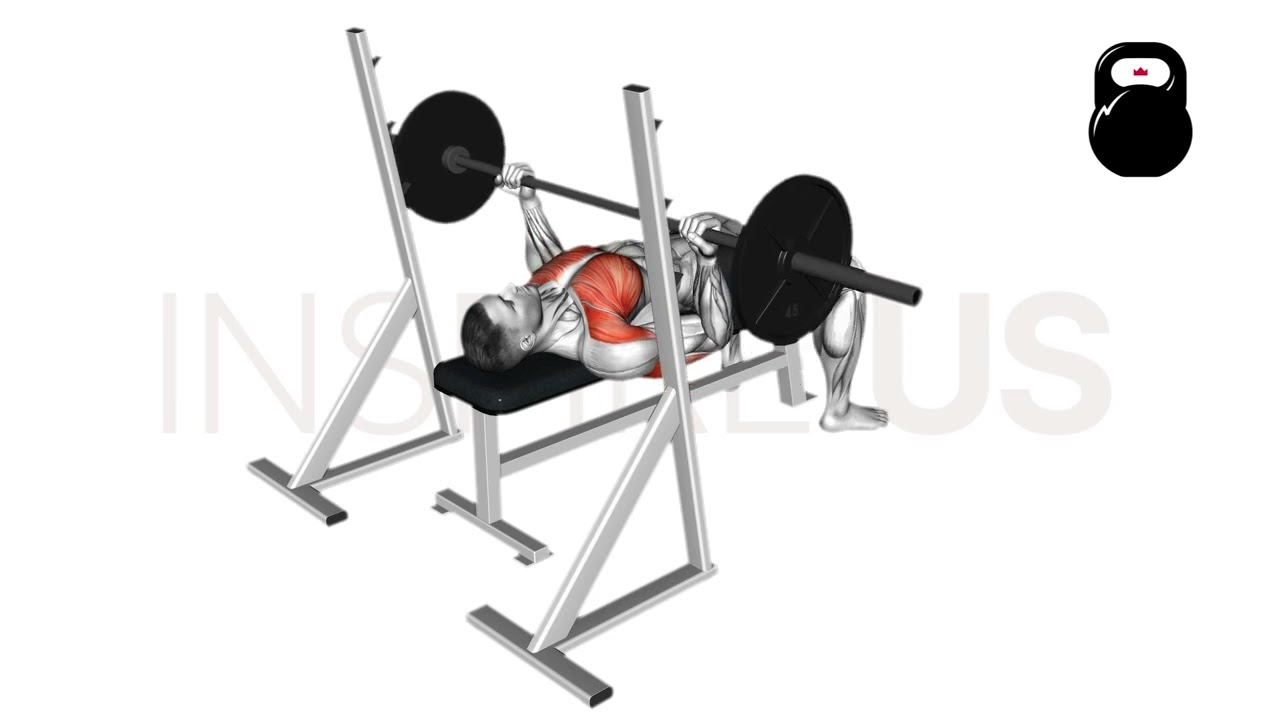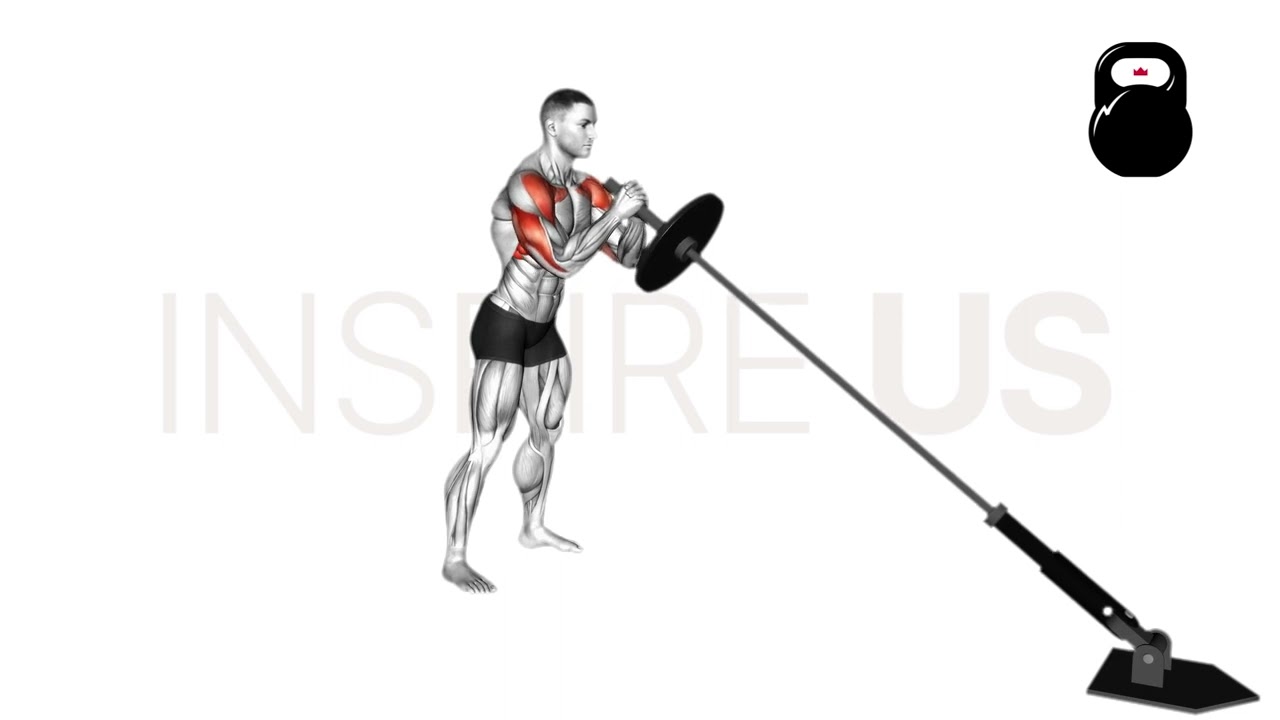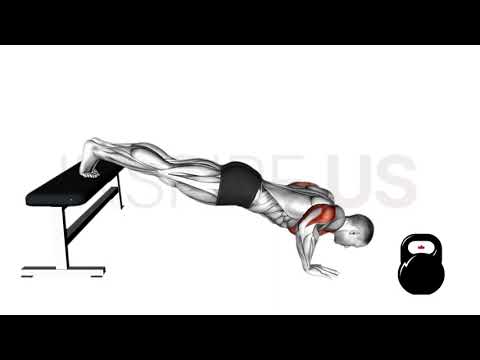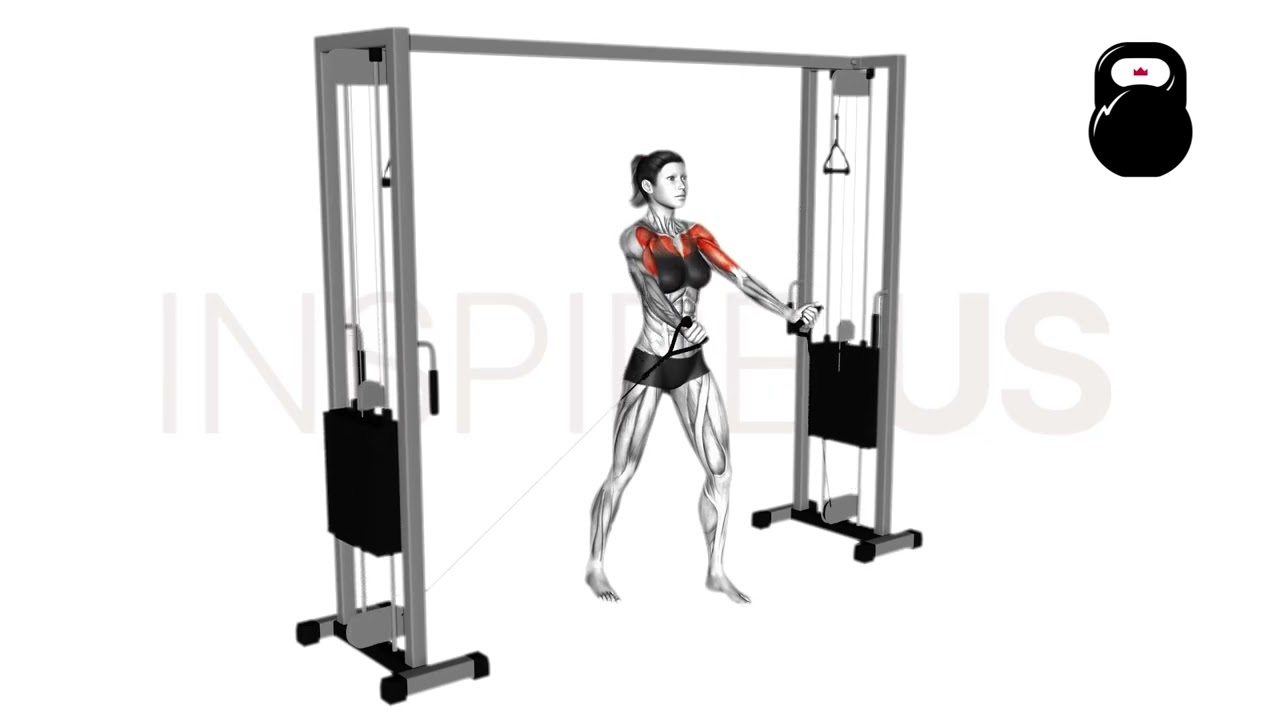4 Best Incline Bench Press Alternatives (with Pictures!)
The incline bench press is known for its effectiveness at targeting the upper chest and anterior deltoids.
However, issues relating to a lack of equipment or the incline bench’s nature as a compound movement are also quite common. In such cases, selecting a more suitable alternative exercise may be your best option.
Some of your best alternatives include:
- Reverse Grip Flat Bench Press
- Landmine Shoulder Press
- Decline Push-ups
- Low Cable Chest Flys
Incline Bench Alternatives
If No Incline Bench is Available: Reverse Grip Flat Bench Press
Though a precarious exercise for novices, lifters that wish to recreate the same upper chest emphasis while remaining as true to the incline variant as possible can try the reverse grip bench press instead.
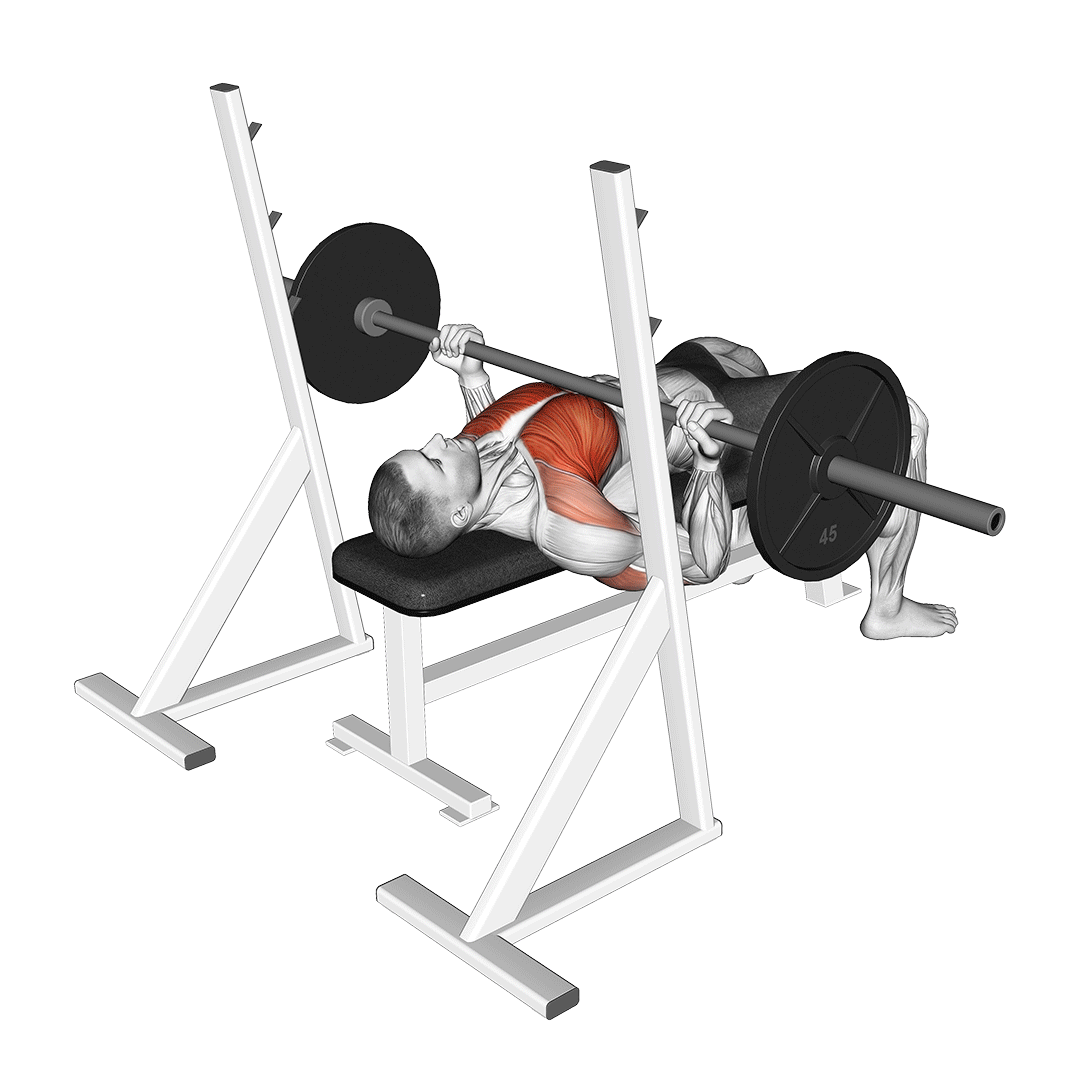
The reverse grip bench press is quite literally a conventional flat bench press with the palms facing inwards. This allows for greater external rotation of the shoulders (more stability), a slightly larger range of motion and a wider hand placement.
Equipment Needed
Barbell, Flat Bench, Weight Plates
Sets and Reps Recommendation
Because the lifter is oriented horizontally, the reverse grip bench press will allow for somewhat more weight to be lifted in comparison to its incline cousin. Despite this, the greater risk of acute injury involved must also be considered.
3-5 sets of 8-12 repetitions at a moderate or heavy load should be enough for overall muscular development.
Common Mistakes to Avoid
Ensure your hands are firmly gripping the bar, fingers entirely encircling it. Performing the bench press with a reverse grip is significantly less secure, and can result in serious injury.
Lifters may also take advantage of the more mechanically advantageous stance to minimize shoulder strain. The elbows can be tucked closer to the trunk than would be possible with a conventional bench press.
How-to:
- To perform a repetition of the reverse grip bench press, the lifter lies flat on their back with their scapula completely retracted and a small arch present along their lower back.
- Placing their hands wider than shoulder-width apart along the bar with the palms facing forwards, the lifter then unracks the bar and holds it at full extension.
- Keeping the elbows close to the trunk, the lifter lowers the bar until it touches their chest - maintaining full scapular retraction and external shoulder rotation as they do so.
- Bar now resting atop their chest, the lifter drives through their wrists and pushes the bar back upwards.
- Once the elbows are once again fully extended, the repetition is considered complete.
If Your Program Calls for Horizontal Pressing: Landmine Shoulder Press
In powerlifting and similar strength-focused programs, the incline bench press is occasionally used as an accessory exercise for improving horizontal pressing capability.
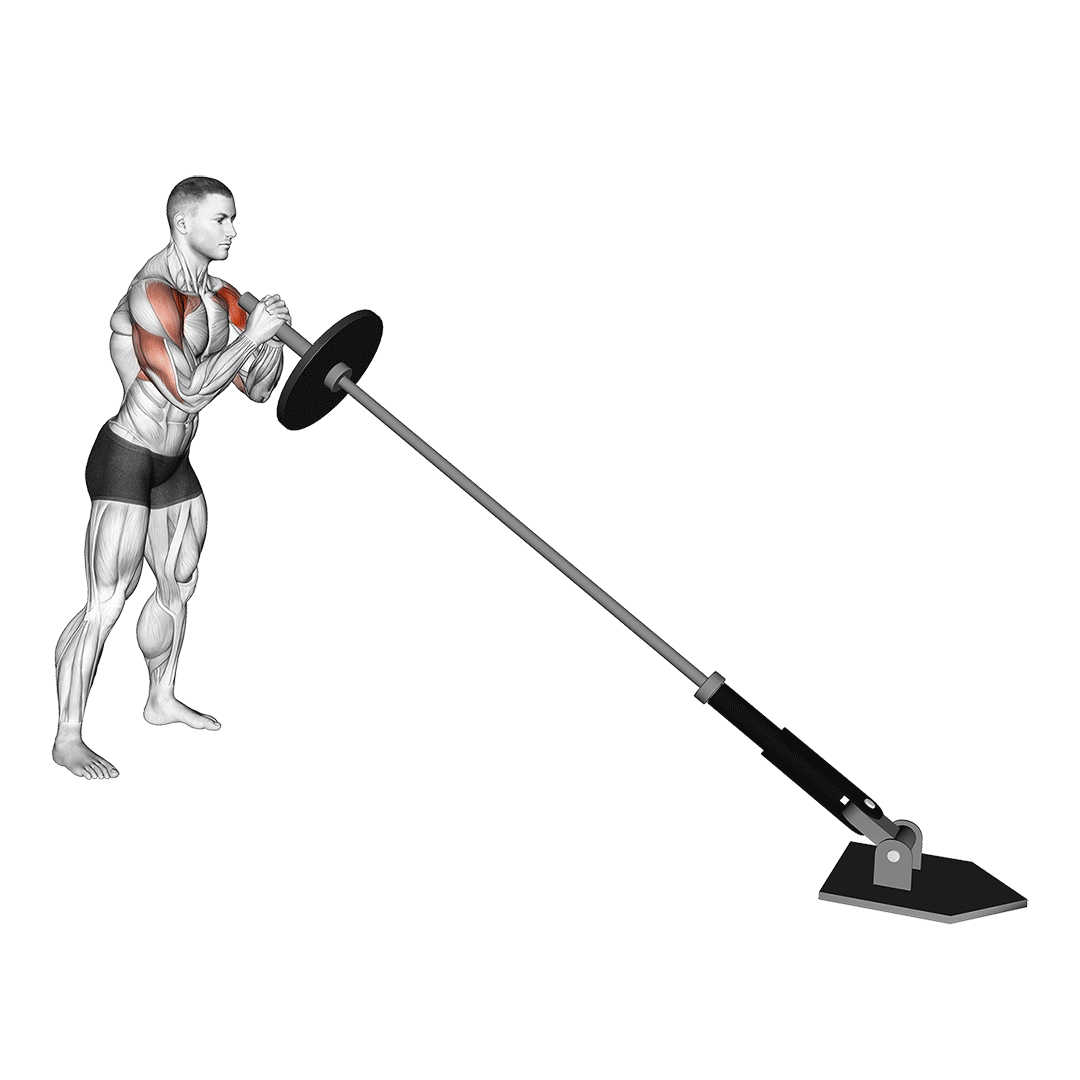
Depending on the needs and specific sport of the lifter, this may be sub-optimal as the incline bench press will not quite replicate the same stance or angle of force required for traditional competition lifts.
Fortunately, a more true-to-life exercise with similar functionality comes in the form of the landmine shoulder press.
Unlike the incline bench, the landmine shoulder press may be performed kneeling or standing upright while simultaneously using a similar angle of resistance.
Equipment Needed
Landmine, Barbell, Weight Plates
Sets and Reps Recommendation
The landmine shoulder press is more efficient when performed for moderate volume and a moderate amount of weight, rather than specializing towards one or the other.
4-6 sets of 6-10 repetitions should be a good starting point for most.
Common Mistakes to Avoid
Some amount of forward trunk lean is beneficial for maximizing shoulder contraction - just make sure not to bend too far forwards or otherwise round the back.
Another common mistake of the landmine shoulder press is failing to lower the bar sufficiently close to the body before beginning a new repetition. Lifters should ensure that the end of the bar is pointed at the same level as their neck or chest prior to pushing it back outwards.
How-to:
- Loading one end of the barbell with plates and inserting the other into a landmine apparatus, the lifter hoists the loaded end up to about chest-height.The scapula should be partially retracted, the shoulders neutral and the head facing forwards.
- With the bar now held securely, the lifter drives through their palm(s) and presses the bar both upwards and away from their trunk.
- Once the arms are fully extended, the lifter then slowly lowers the end of the bar back to its original starting position at their chest.
- The repetition is now considered complete. Don’t forget to train both sides equally.
If You Prefer Calisthenics: Decline Push-Ups
Whether due to a complete lack of equipment or simple training preference, the incline bench press can be substituted with the decline push-up for the purposes of building the upper pecs.
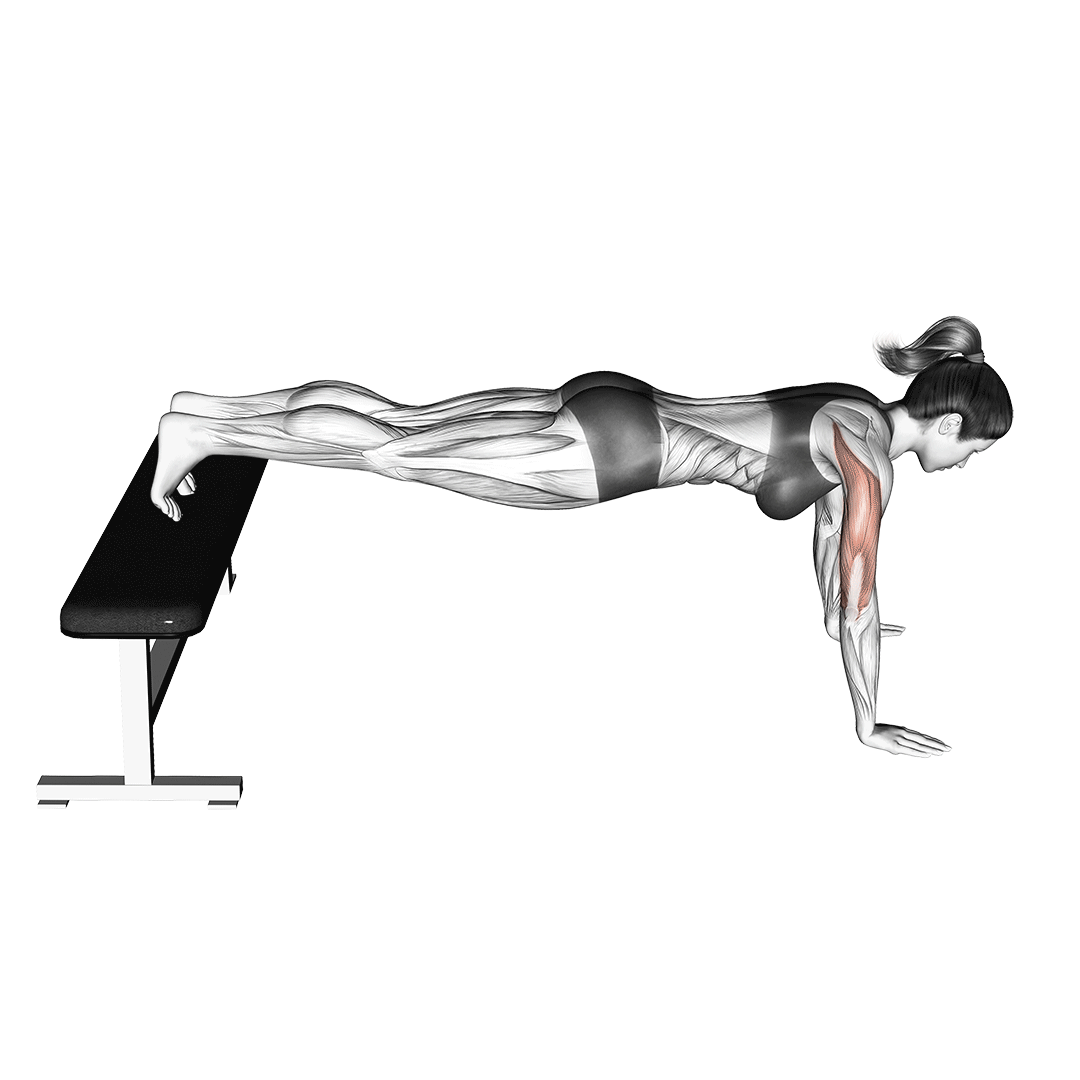
Although the two are quite different in terms of stance, athleticism and even programmability - the decline push-up is similar enough in recruitment pattern and emphasis to act as a general-purpose substitute in a pinch.
Equipment Needed
No Equipment Needed
Sets and Reps Recommendation
Because of how difficult it can be to load decline push-ups, lifters will need to rely on volume and time under tension to drive the intensity of their training.
2-3 sets of anywhere between 10-30 repetitions each should be enough, depending on the lifter’s physical capabilities.
Common Mistakes to Avoid
Avoid flaring the elbows outwards, as this can lead to increased strain on both the shoulders as well as the elbows themselves.
Keep the glutes squeezed and the knees tight so as to better distribute the body’s weight to the upper pushing muscles.
How-to:
- To perform a repetition of the decline push-up, the lifter will place their feet atop an elevated surface as they assume a standard push-up stance on the floor.
The glutes should be tightly squeezed, the abs braced, the hands horizontally parallel to the shoulders. - Now positioned correctly, the lifter lowers their chest towards the floor by bending at the elbows and rotating their shoulders outwards.
- Once the chest is within several inches of touching the floor, the lifter then drives through their palms and extends their elbows - rising back into their starting push-up position.
- The repetition is now considered complete.
If You Need More Isolated Stimulus: Low Cable Chest Flys
Bodybuilders and similar types of hypertrophy-focused lifters may be performing the incline bench press as a method of maximizing the size of their upper pectoral muscles.
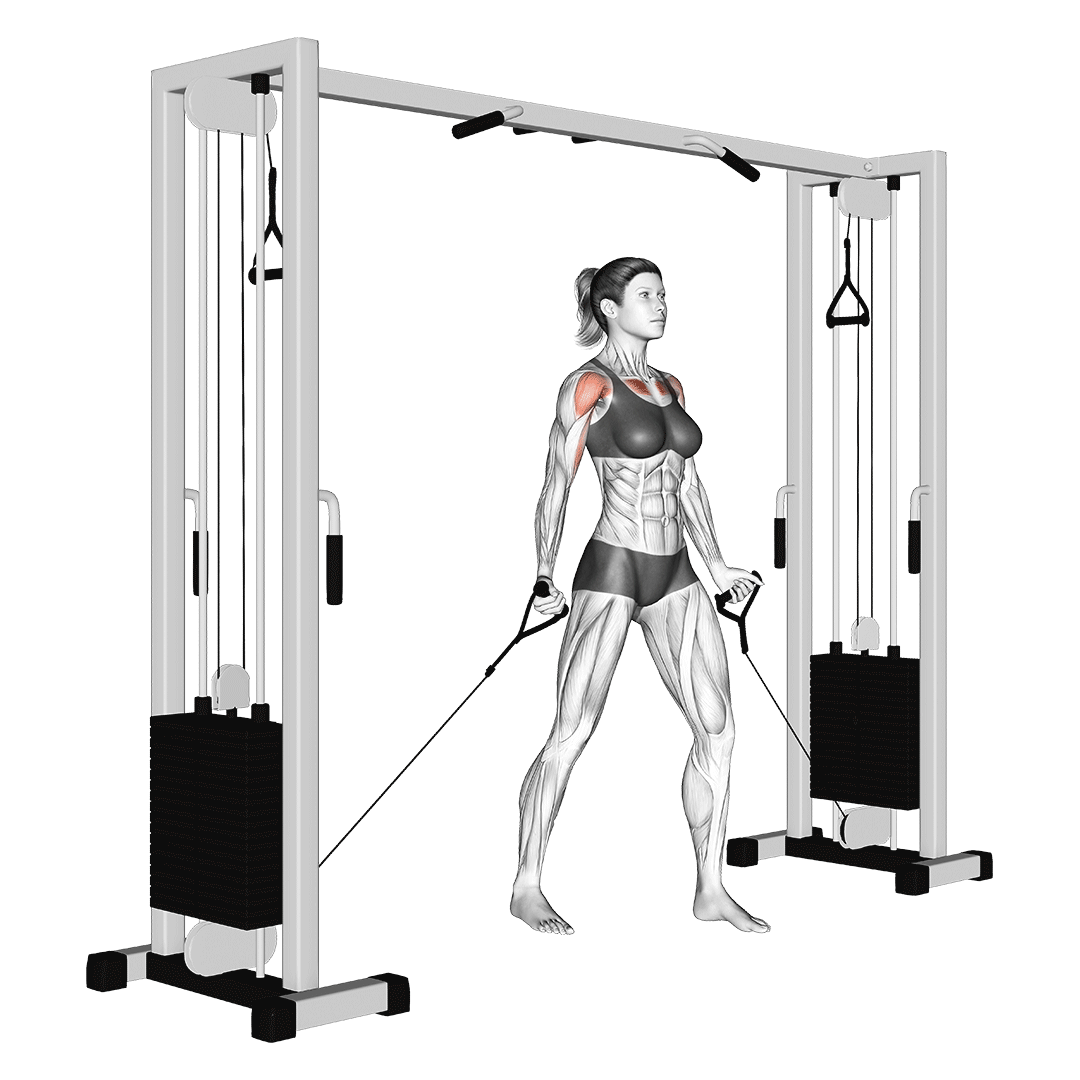
While the incline bench is indeed excellent for achieving this goal, performing it alongside other heavy compound pushing exercises (i.e. the flat bench, weighted dips or the overhead press) may be too taxing for more advanced trainees.
Such an issue can be corrected by selecting a lighter isolation movement - one of the best being the low cable chest fly.
Equipment Needed
Cable Machines, D Handles
Sets and Reps Recommendation
2-4 sets of 10-16 repetitions at a light level of resistance.
Common Mistakes to Avoid
Avoid bending the elbows excessively, as this can contract the biceps. Ensure that the cables are angled behind the body, rather than to the sides.
How-to:
- To perform a repetition of the low cable fly, the lifter sets the cable pulleys as close to the ground as possible.
- Machine now adjusted, the lifter grabs the handles in both hands, takes several steps forwards and slightly bends the torso, holding their arms out to the sides with the elbows straight but not completely locked out.
- Once securely positioned, the lifter contracts their pectoral muscles and adducts their arms towards the front of their trunk in a wide sweeping motion - stopping just shy of the hands touching.
- From this point, they then allow the resistance of the cables to slowly pull their arms back to their original position at their sides. This completes the repetition.
Which Incline Bench Press Alternative is Best?
Outside of specific training needs, the best alternative to the incline bench press is either the landmine press or the reverse grip bench press.
Both are similar enough in intensity and load to replace the incline press without much restructuring of the training program.
References
1. Rodríguez-Ridao D, Antequera-Vique JA, Martín-Fuentes I, Muyor JM. Effect of Five Bench Inclinations on the Electromyographic Activity of the Pectoralis Major, Anterior Deltoid, and Triceps Brachii during the Bench Press Exercise. Int J Environ Res Public Health. 2020 Oct 8;17(19):7339. doi: 10.3390/ijerph17197339. PMID: 33049982; PMCID: PMC7579505.

